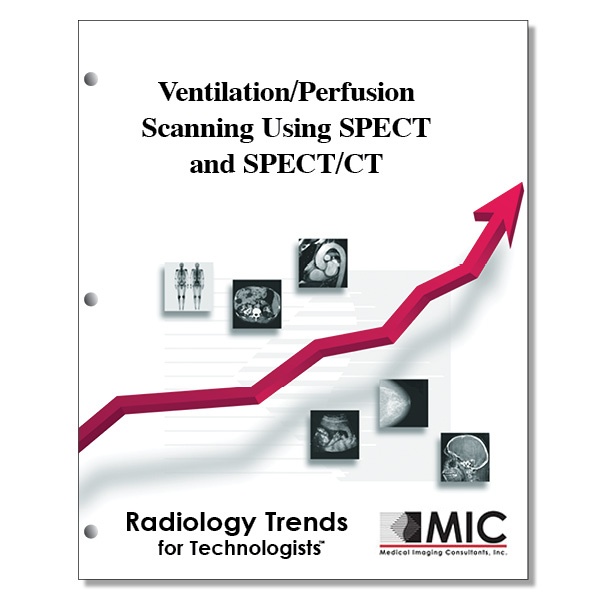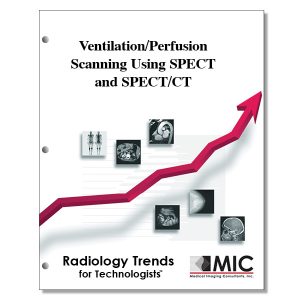

Ventilation/Perfusion Scanning Using SPECT and SPECT/CT
Advantages and disadvantages of planar imaging, SPECT V/Q scanning, and CT pulmonary angiography are presented in the investigation of pulmonary embolism.
Course ID: Q00385 Category: Radiology Trends for Technologists Modalities: CT, Nuclear Medicine2.25 |
Satisfaction Guarantee |
$24.00
- Targeted CE
- Outline
- Objectives
Targeted CE per ARRT’s Discipline, Category, and Subcategory classification:
[Note: Discipline-specific Targeted CE credits may be less than the total Category A credits approved for this course.]
Computed Tomography: 0.75
Procedures: 0.75
Neck and Chest: 0.75
Nuclear Medicine Technology: 2.25
Patient Care: 0.75
Patient Interactions and Management: 0.75
Procedures: 1.50
Other Imaging Procedures: 1.50
Registered Radiologist Assistant: 2.25
Procedures: 2.25
Thoracic Section: 2.25
Outline
- Introduction
- Advantages of SPECT Over Planar Imaging
- V/Q SPECT
- Technique
- Image Acquisition, Processing, Display, and Reporting
- Comparison with CTPA
- V/Q SPECT/CT
- Protocol, Processing, Display, and Reporting
- Clinical Value
- Combining V/W SPECT with CTPA
- Controversies
- Is the Ventilation Scan Necessary
- Do Additional Clots Detected by SPECT Warrant Treatment
- Non-PE Applications and Future Directions
- Conclusion
Objectives
Upon completion of this course, students will:
- be familiar with the advantages of V/Q SPECT vs. planar nuclear imaging for assessing PE
- be familiar with the acronym for computed tomography pulmonary angiography
- be familiar with the most likely source of clinically recognized PE
- identify what percentage of all cases of sudden death can be attributed to PE
- identify which radiopharmaceuticals are used with ventilation SPECT
- be familiar with the acquisition time per projection for V/Q SPECT
- be familiar with the post-reconstruction filter typically used on V/Q SPECT
- identify which guidelines are used for reporting V/Q SPECT
- identify which imaging test is used for initial assessment of PE in the U.S.
- be familiar with the significant limitations of CTPA
- be familiar with the patient’s radiation dose associated with CTPA
- be familiar with the acceptable number of particles in a patient’s dose of MAA
- understand what the mechanism of localization is for 99mTc-MAA
- identify the strengths of VQ SPECT and VQ SPECT/CT vs. CTPA
- understand the potential of VQ SPECT/CT to assess PE
- be familiar with the mA settings for a “low dose” CT
- be familiar with techniques to reduce respiratory-motion misregistration using SPECT/CT
- be familiar with the reported sensitivity by Gutte et al. when performing CTPA
- understand what factors can improve spatial resolution on SPECT images
- be familiar with the overall improvement in image contrast on SPECT vs planar nuclear medicine images
- understand the requirement for testing uniformity on a SPECT system
- identify the effect on quantification of SPECT lung images by using patient-specific attenuation
- be familiar with PET radiopharmaceuticals being investigated to assess PE
- identify future radiopharmaceuticals that will be used to perform radiolabeled thrombus imaging
- be familiar with the early findings of radiolabeled thrombus-specific antibody fragments
